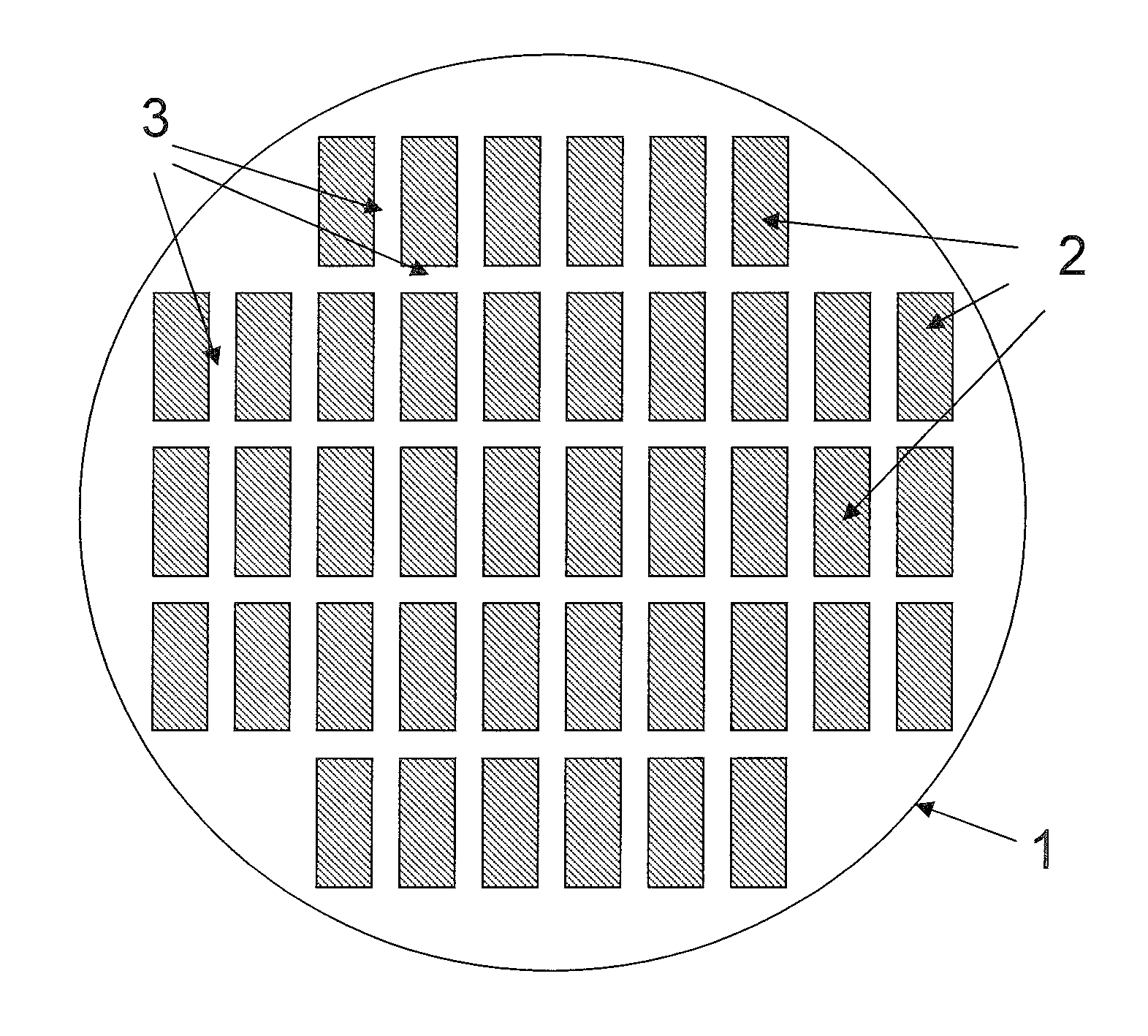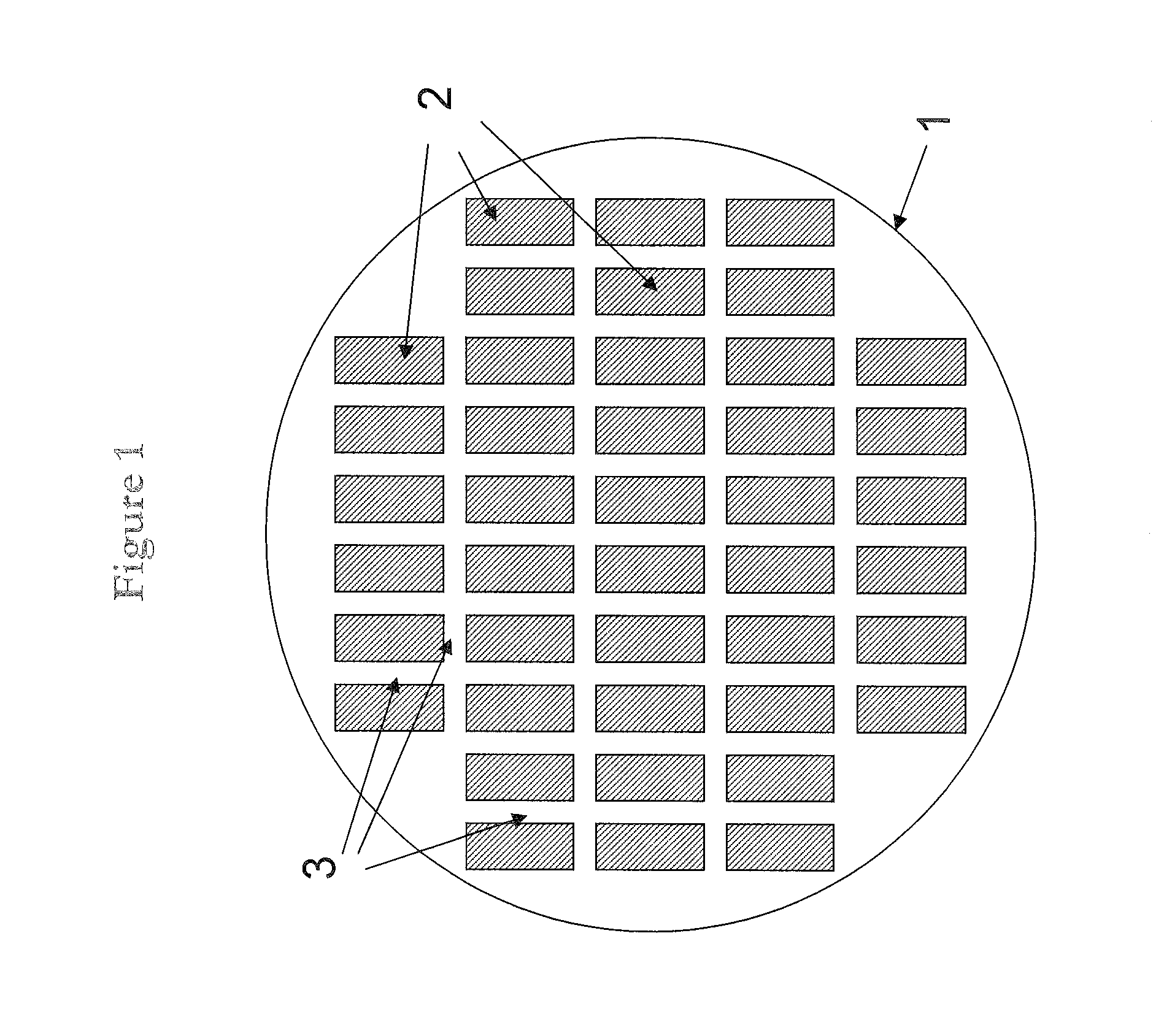Method and Apparatus for Plasma Dicing a Semi-conductor Wafer
a technology of semi-conductor wafers and plasma dicing, which is applied in the direction of electric discharge tubes, solid-state devices, transportation and packaging, etc., can solve the problems of reducing the number of good dies produced, affecting the cost effectiveness of this approach, and limitations of the dicing techniqu
- Summary
- Abstract
- Description
- Claims
- Application Information
AI Technical Summary
Benefits of technology
Problems solved by technology
Method used
Image
Examples
Embodiment Construction
[0052]A typical semiconductor substrate after device fabrication is illustrated in FIG. 1. The substrate (1) has on its surface a number of areas containing device structures (2) separated by street areas (3) in which there are no structures which allows for separation of the device structures into individual die. Although silicon is commonly used as a substrate material, other materials chosen for their particular characteristics are frequently employed. Such substrate materials include gallium arsenide and other III-V materials or non-semi-conductor substrates on which has been deposited a semi-conducting layer.
[0053]In the present invention, as is shown in a cross sectional view in FIG. 2, the device structures (2) are then covered with a protective material (4) while the street areas (3) remain unprotected. This protective material (4) can be a photoresist, applied and patterned by well-known techniques. Some devices, as a final process step are coated with a protective dielectr...
PUM
 Login to View More
Login to View More Abstract
Description
Claims
Application Information
 Login to View More
Login to View More - R&D
- Intellectual Property
- Life Sciences
- Materials
- Tech Scout
- Unparalleled Data Quality
- Higher Quality Content
- 60% Fewer Hallucinations
Browse by: Latest US Patents, China's latest patents, Technical Efficacy Thesaurus, Application Domain, Technology Topic, Popular Technical Reports.
© 2025 PatSnap. All rights reserved.Legal|Privacy policy|Modern Slavery Act Transparency Statement|Sitemap|About US| Contact US: help@patsnap.com



